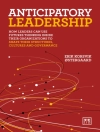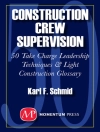Supply Chain Management: Securing a Superior Global Edge takes a holistic, integrated approach to managing supply chains by addressing the critically important areas of globalization, sustainability, and ethics in every chapter. Authors Ray Venkataraman and Ozgun C. Demirag use a wide variety of real-world cases and examples from the manufacturing and service sectors to illustrate innovative supply chain strategies and technologies. With a focus on decision-making and problem-solving,
Supply Chain Management provides students with the tools they need to succeed in today’s fiercely competitive, interconnected global economy.
Spis treści
Preface
Acknowledgments
About the Authors
Part I: Introduction to Supply Chain Management and Supply Chain Strategy
Chapter 1: Introduction to Managing Global Supply Chains
1.1 The Globalization of Business
1.2 Global Supply Chains
1.3 Global Supply Chain Structures and Partners
1.4 Decisions in Supply Chain Management
1.5 Integrated Supply Chain Management
1.6 Evolution of Supply Chain Management
1.7 Current and Emerging Issues in Global Supply Chain Management
Chapter 2: Global Supply Chain Strategy
2.1 Levels of Strategic Planning
2.2 Formulating and Evaluating an Operations Strategy
2.3 Formulating and Evaluating Service Operations Strategy
2.4 Supply Chain Strategy for Products and Services
2.5 Global Operations and Supply Chain Strategies
2.6 Evaluating the Performance of Supply Chain Strategies
Part II: Strategic Decisions in Supply Chain Management
Chapter 3: Supply Chain Considerations in Product and Service Design
3.1 Why Businesses Develop New Products and Services
3.2 Reasons for New Product Failures
3.3 The New Product Development Process
3.4 What Is Global Product Development?
3.5 Service Design
3.6 Supply Chain Issues in New Product Development
3.7 Supply Chain Collaboration in New Product Development
3.8 Integrating Sustainability in New Product Development
3.9 Legal and Ethical Issues in New Product Development
Chapter 4: Process Design and Capacity Planning for Supply Chains
4.1 Importance of Process Design Decisions
4.2 Process Selection and Its Implications for Supply Chains
4.3 Global Issues in Process Design
4.4 Design of Service Processes
4.5 Capacity Planning for Goods-Producing Firms
4.6 Capacity Planning for Service-Providing Firms
4.7 Capacity Planning for Supply Chains
4.8 Managing Capacity in Global Supply Chains
4.9 Sustainability and Ethical Issues in Process Design and Capacity Planning
Chapter 5: Supply Chain Network Design
5.1 Importance of Supply Chain Network Design Decisions
5.2 Factors Affecting Supply Chain Network Design Decisions
5.3 Supply Chain Network Design Framework
5.4 Analytical Models for Network Design Decisions
5.5 Location Strategies for Service Supply Chains
5.6 Impact of Globalization on Supply Chain Network Design
5.7 Supply Chain Network Design for Omnichannels
5.8 Sustainability and Ethical Issues in Supply Chain Network Design
Chapter 5 Supplement: Advanced Models for Network Location and Capacity Allocation
5S.1 What Is Linear Programming?
5S.2 Salient Features of a Linear Programming Problem
5S.3 Network Design Models for Facilities Location: Optimization Models
5S.4 Network Design Decisions Under Conditions of Uncertainty
Part III: Tactical Decisions in Supply Chain Management
Chapter 6: Demand Management and Customer Service
6.1 The Demand Management Process
6.2 Demand Planning
6.3 Demand Forecasting
6.4 Consumer Demand Management
6.5 Global Demand Management
6.6 Services Demand Management
6.7 Customer Service and Demand Management
6.8 Customer Service and Sustainability
Chapter 7: Demand Forecasting Methods
7.1 Introduction to Forecasting and Its Applications
7.2 Characteristics of a Good Forecast
7.3 Steps in Supply Chain Forecasting
7.4 Qualitative Versus Quantitative Forecasting Methods
7.5 Short-Term Time Series Forecasting Methods
7.6 Medium- to Long-Term Time Series Forecasting Methods
7.7 Causal (Associative) Forecasting Methods
7.8 Measuring and Monitoring the Accuracy of Forecasting Methods
7.9 Monitoring and Controlling Forecasts
7.10 Ethics in Forecasting
Chapter 8: Sales and Operations Planning
8.1. What Is Sales and Operations Planning?
8.2. Benefits of Sales and Operations Planning
8.3 Implementation of the Sales and Operations Planning Process
8.4 Options for Influencing Demand and Supply in Sales and Operations Planning
8.5 Sales and Operations Planning Strategies
8.6 Methods for Sales and Operations Planning
8.7 Sales and Operations Planning in Supply Chains
8.8 Global Sales and Operations Planning
8.9 Sales and Operations Planning in Service Industries
8.10 Sustainable Sales and Operations Planning—Sales Carbon Operations Planning
8.11 Ethical Issues in Sales and Operations Planning
Chapter 8 Supplement: Developing a Sales and Operations Plan Using Linear Programming
8S.1 Formulating and Solving Sales and Operations Planning Problems Using Linear Programming
Chapter 9: Supplier Management
9.1 Supplier Management and Its Importance
9.2 Goals of Supplier Management
9.3 The Supplier Management Process
9.4 Strategic Sourcing
9.5 Purchasing
9.6 Supplier Performance Management
9.7 Supplier Risk Management
9.8 Supplier Information Management
9.9 Supplier Relationship Management
9.10 Supplier Phaseout
9.11 Managing Service Providers
9.12 Global Supplier Management
9.13 Legal, Ethical, and Sustainability Issues in Supplier Management
Chapter 10: Logistics Management
10.1 Integrated Logistics Management
10.2 Order Fulfillment
10.3 Transportation Management
10.4 Packaging
10.5 Materials Handling
10.6 Warehousing Management
10.7 Inventory Management
10.8 Facilities Network Design
10.9 Global Logistics
10.10 Omnichannel Logistics
10.11 Logistics Outsourcing
10.12 Logistics in the Service Sector
10.13 Ethical and Sustainability Issues in Logistics Management
Part IV: Operational Decisions in Supply Chain Management
Chapter 11: Lean Operations and Supply Chains
11.1 Introduction to Lean Operations
11.2 The Philosophy of Lean Systems
11.3 Elements of Lean Systems
11.4 Lean Services
11.5 Lean Supply Chains
11.6 Lean Versus Agile Supply Chains
11.7 Lean Global Supply Chains
11.8 Sustainability Issues in Lean Operations and Supply Chains
Chapter 12: Inventory Management in Supply Chains
12.1 The Importance of Inventory
12.2 Types of Inventory
12.3 Inventory Costs
12.4 The Role of Inventory in Supply Chains
12.5 Inventory Management Performance Metrics
12.6 Key Features of Effective Inventory Management Systems
12.7 The Impact of Uncertainty on Supply Chain Inventories: The Bullwhip Effect
12.8 Centralized Versus Decentralized Inventory Management
12.9 Omnichannel Inventory Management
12.10 Global Inventory Management
12.11 Service Sector Inventory Management
12.12 Ethical and Sustainability Issues in Inventory Management
Chapter 13: Inventory Control Models for Supply Chains
13.1 How Much to Order: Continuous Review Systems
13.2 Basic Economic Order Quantity Model
13.3 Economic Production Quantity Model
13.4 EOQ Model With Quantity Discounts
13.5 When to Order: Reorder Point for Continuous Review Systems (EOQ Model)
13.6 How Much to Order: Periodic Review Systems
13.7 How Much to Order: Single-Period Inventory Systems
Chapter 13 Supplement: Advanced Inventory Control Models for Supply Chains
13S.1 Advanced EOQ Models for Supply Chains
13S.2 Advanced Reorder Point Models
13S.3 Inventory Risk Pooling
Part V: Cross-Functional and Integrative Decisions in Supply Chain Management
Chapter 14: Pricing and Revenue Management in Supply Chains
14.1 Pricing Strategies for Supply Chain Management
14.2 The Concept of Revenue Management
14.3 Pricing and Revenue Management Techniques for Multiple Customer Segments
14.4 Pricing and Revenue Management Techniques for Bulk and Spot Customers
14.5 Pricing and Revenue Management Approaches for Perishable Assets
14.6 Pricing and Revenue Management Approaches for Products With Seasonal Demand
14.7 Global Pricing Strategies
14.8 Revenue Management in the Service Sector
14.9 Ethical and Sustainability Issues in Revenue Management
Chapter 15: The Role of Technology in Supply Chain Management
15.1 A Supply Chain Technologies Framework
15.2 Emerging Technologies Impacting Supply Chains
15.3 Supply Chain Information Technology
15.4 Supply Chain Optimization
15.5 Supply Chain Finance
15.6 Supply Chain Risk Management
15.7 Impact of Technologies on Global Supply Chains
15.8 Impact of Technologies on Service Supply Chains
15.9 The Role of Technology in Achieving Ethical and Sustainable Supply Chains
Online Chapter: Operational Planning Decisions and Their Supply Chain Implications
Appendix: Tables
Glossary
Notes
Name Index
Subject Index
O autorze
Ozgun C. Demirag is Professor of Operations and Supply Chain Management at the Sam and Irene Black School of Business at Penn State Erie, The Behrend College. She has a Ph D in Industrial and Systems Engineering from Georgia Institute of Technology. She teaches courses in the areas of supply chain management, operations planning and control, and quantitative methods for business at the undergraduate and graduate levels. She has previously taught at the Chinese University of Hong Kong and has industry experience as a research intern at Norfolk Southern, Inc., Atlanta, GA. Her main research interests include supply chain management; applications of game theory in operations/marketing interface; sustainability; omnichannel retailing; and analysis of transportation, logistics, and inventory systems. Her research has been published in several prestigious journals, such as Operations Research, Production and Operations Management, European Journal of Operational Research, OMEGA – The International Journal of Management Science, International Journal of Production Economics, Naval Research Logistics, Annals of Operations Research, and Transportation Research Part E: Logistics and Transportation Review. She currently serves on the editorial review boards of the Production and Operations Management, Decision Sciences, and Transportation Research Part E: Logistics and Transportation Review journals. She is a recipient of the Penn State Behrend Council of Fellows Excellence in Research Award, Penn State University Excellence in Advising Award, and the National Society of Leadership and Success Excellence in Teaching Award.












